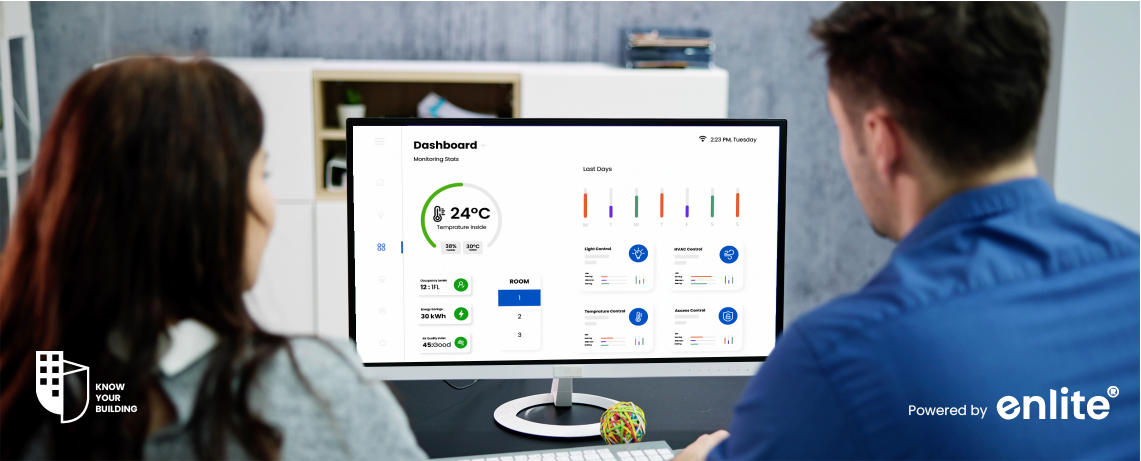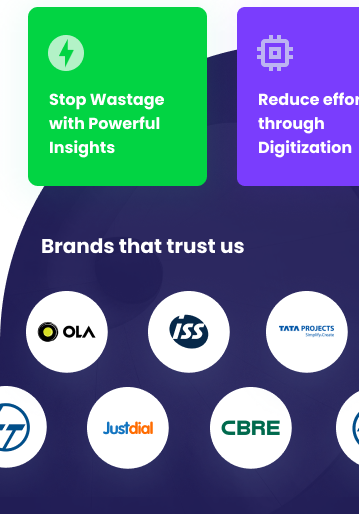In today’s world, sustainability is no longer an option—it’s a necessity. With buildings accounting for nearly 40% of global energy consumption and 33% of greenhouse gas emissions, the pressure is on property owners and facility managers to adopt greener, more efficient practices.
The answer lies in data-driven building management—a smarter approach that leverages real-time data, analytics, and automation to optimize energy use, reduce waste, and create sustainable spaces. Platforms like Know Your Building® make this possible by integrating cutting-edge cloud-native technologies with powerful data insights to drive smarter decisions and measurable results.
What is Data-Driven Building Management?
Data-driven building management uses IoT sensors, cloud-based platforms, and AI-powered analytics to monitor and control building systems, such as HVAC, lighting, plumbing, and energy usage.
By collecting and analyzing real-time data, facility managers can:
- Track energy consumption patterns.
- Identify inefficiencies and optimize performance.
- Predict maintenance needs to prevent breakdowns.
- Reduce carbon footprints and support sustainability goals.
Instead of relying on manual checks and guesswork, data-driven systems provide actionable insights for smarter decision-making.
How Data-Driven Building Management Supports Sustainability
1. Real-Time Energy Monitoring and Optimization
Problem: Buildings often operate inefficiently, wasting energy and driving up costs.
Solution:
Data-driven platforms, like Know Your Building®, track energy usage in real time and identify patterns to optimize system performance.
- Example: Reduce HVAC and lighting usage during off-peak hours to avoid energy waste.
- Impact: Energy savings of up to 30%, leading to reduced carbon emissions.
2. Predictive Maintenance to Reduce Waste
Problem: Traditional maintenance approaches lead to reactive repairs, resulting in equipment failure, downtime, and waste.
Solution:
AI-powered predictive maintenance uses sensors to monitor equipment health and predict failures before they occur.
- Example: Anomalies in HVAC performance trigger alerts, enabling preventive maintenance.
- Impact: Longer equipment lifespan and less landfill waste from frequent replacements.
3. Smarter HVAC and Climate Control
Problem: Heating and cooling systems account for nearly 50% of energy use in commercial buildings, often operating inefficiently.
Solution:
Smart Building Management Systems (BMS) dynamically adjust temperature, ventilation, and airflow based on occupancy, weather, and usage data.
- Example: HVAC systems automatically reduce cooling in unoccupied zones, saving energy without compromising comfort.
- Impact: Optimized energy use reduces carbon emissions while maintaining comfort.
4. Renewable Energy Integration
Problem: Many buildings struggle to integrate renewable energy sources into their operations.
Solution:
Data-driven BMS platforms monitor renewable energy inputs, such as solar panels, and balance consumption with stored energy during peak demand hours.
- Example: Excess solar energy is stored for nighttime use, reducing dependence on fossil fuels.
- Impact: Greater reliance on clean energy and lower environmental impact.
5. Sustainability Reporting and Compliance
Problem: Tracking and reporting sustainability metrics can be complex and time-consuming.
Solution:
Cloud-based systems like Know Your Building® provide automated reports on energy usage, emissions, and compliance with ESG (Environmental, Social, and Governance) standards.
- Example: Facility managers can generate reports for LEED certification or corporate sustainability goals.
- Impact: Simplified compliance processes and improved accountability.
Key Benefits of Data-Driven Building Management
- Energy Efficiency
- Optimize HVAC, lighting, and utility systems to cut costs and reduce energy consumption.
- Lower Carbon Footprint
- Automate systems to minimize waste and integrate renewable energy sources seamlessly.
- Cost Savings
- Reduce energy bills, operational expenses, and repair costs through smart controls and predictive maintenance.
- Improved Occupant Comfort
- Maintain consistent temperatures and air quality for better occupant satisfaction and productivity.
- Scalability for Growth
- Manage multiple facilities remotely and scale operations as needed without adding complexity.
- Sustainability Compliance
- Generate sustainability reports and track metrics for ESG goals and certifications.
How Know Your Building® Leads Sustainable Building Management
Know Your Building® is a wireless, cloud-native Building Management System designed to help facility managers embrace sustainability through data-driven insights.
Key Features Include:
- Real-Time Monitoring: Track energy and resource usage 24/7.
- AI-Powered Optimization: Automate systems to cut waste and enhance efficiency.
- Predictive Maintenance: Prevent breakdowns and extend equipment lifespan.
- Remote Access: Manage systems from anywhere for seamless control.
- Sustainability Reporting: Monitor carbon footprints and generate compliance reports effortlessly.
Whether you’re managing a single building or multiple facilities, Know Your Building® provides the tools to reduce waste, cut costs, and support sustainability goals.
Key Takeaways
- Data-driven building management leverages AI, IoT, and cloud technologies to optimize performance and reduce energy waste.
- Real-time monitoring and predictive maintenance minimize downtime and lower operational costs.
- Sustainability reporting tools make compliance with ESG standards easier and more transparent.
- Smart HVAC and energy management systems support greener operations without compromising comfort.
- Know Your Building® offers scalable, cloud-native solutions to drive energy efficiency and sustainability across facilities.
Final Thoughts: Sustainability Starts with Smarter Management
As businesses prioritize sustainability, data-driven building management has become a key enabler for achieving efficiency and environmental goals. By leveraging AI-powered analytics, real-time monitoring, and renewable energy integration, buildings can operate smarter, greener, and more cost-effectively.
With platforms like Know Your Building®, facility managers can confidently embrace data-driven practices to reduce carbon footprints, optimize resources, and meet sustainability targets—turning their buildings into models of efficiency and innovation.














